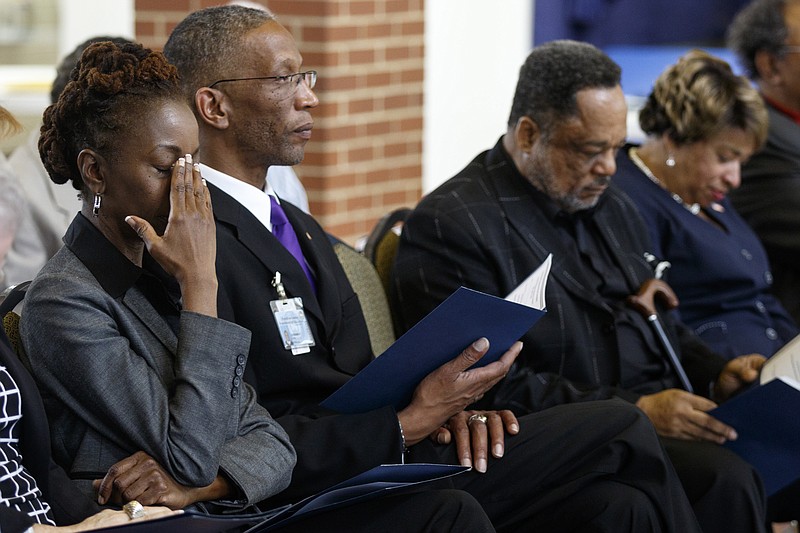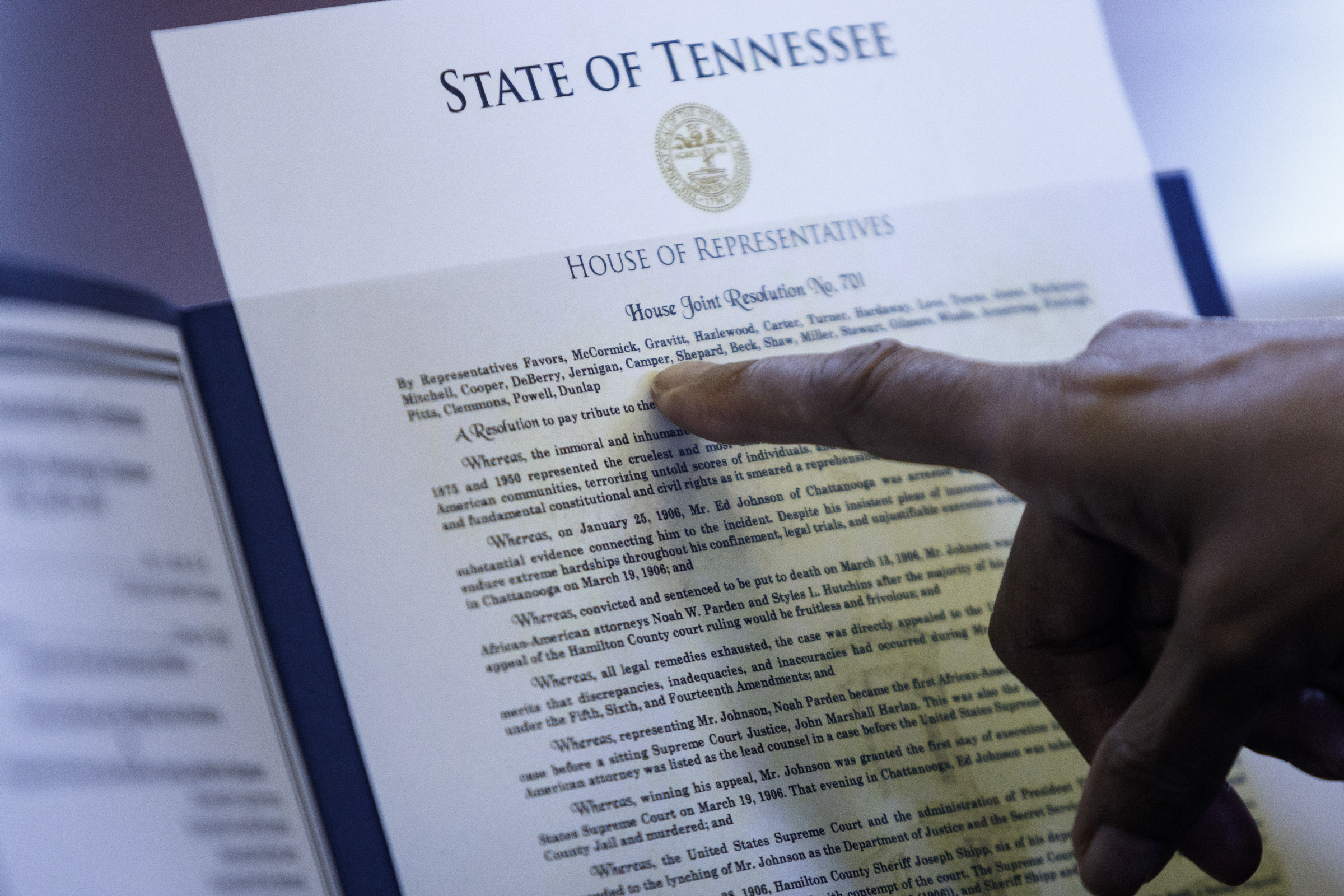"This day frees me. I had declared that I would never walk on that [Walnut Street] bridge again, because it seemed like nobody cared about what happened there."
Steps toward racial reconciliation and healing were taken at the Bessie Smith Cultural Center on Friday as blacks and whites celebrated Tennessee House Joint Resolution 701 recognizing Ed Johnson, a man hanged from the Walnut Street Bridge in 1906.
Some 50 people, including representatives from the Mercy Junction Peace and Justice Center, the NAACP, Chattanooga Connected and the Chattanooga Police Department attended the Ed Johnson Commemoration Ceremony near the 110th anniversary of the lynching.
"This day frees me," said Hamilton County Commissioner Greg Beck. "I had declared that I would never walk on that [Walnut Street] bridge again, because it seemed like nobody cared about what happened there."
Beck said he was grateful to be a part of the ceremony Friday.
State Rep. JoAnne Favors, D-Chattanooga, presented the resolution.
"Whereas, on January 25, 1906, Mr. Ed Johnson of Chattanooga was arrested for a heinous crime without any substantial evidence connecting him to the incident," she read from the document. "Despite his insistent pleas of innocence, Mr. Johnson was made to endure extreme hardships throughout his confinement, legal trials, and unjustifiable execution atop the Walnut Street Bridge in Chattanooga on March 19, 1906."
Eric Atkins, who initiated research for the resolution and hosted the event Friday, said he was as "happy as a kid in a candy store" on March 28, when the resolution was adopted.
One by one, black and white people walked to the podium, recognizing the tragic lynching and looking for ways to move forward.
Virginia College instructor Mariann Martin leads cleanups of the Pleasant Garden Cemetery, where Johnson is buried. She is working to get the cemetery listed on the National Register of Historic Places.
Orchard Knob Elementary School Principal LaFrederick Thirkill, who started a scholarship in Johnson's name, said he tweeted President Barack Obama asking him to help Chattanooga get an Ed Johnson memorial before he leaves office.
Hamilton County Commissioner Warren Mackey and City Councilman Yusuf Hakeem challenged the group to do more to improve current disparities in the city.
"We're informing ourselves and children, but what change is in the atmosphere?" Hakeem asked after discussing the challenges of economically and educationally disadvantaged people.
Mayor Andy Berke urged the audience to continue sharing Ed Johnson's story.
"This is a story that we should all remember for the rest of our lives and teach it to our children," he said.
Retired pastor the Rev. Paul McDaniel said remembering the lynching should motivate all citizens to make sure nothing like that happens again.
"It's a reminder of how low we can fall as a people," McDaniel said.
It was Jan. 25, 1906, when 24-year-old Ed Johnson was arrested in connection with the rape of 21-year-old Nevada Taylor. A mob of more than 1,500 people surrounded the jail that night to lynch him, but in anticipation of the attack Hamilton County Sheriff Joseph Shipp and County Judge Samuel D. McReynolds had sent Johnson to Nashville earlier that day.
Johnson took part in his trial on Feb. 6, 1906. He continuously stated that he was innocent. His accuser, Taylor, refused to swear that he was her assailant, but said she believed that it was him.
That was enough for a jury to convict Johnson and sentence him to death. Despite appeals and even a stay of execution from the U.S. Supreme Court, a mob lynched Johnson.
The lynching was one of thousands that took place in the United States and the second that took place on the Walnut Street Bridge. The injustice of the Johnson case shook the nation.
After the lynching, local blacks refused to work in protest. President Theodore Roosevelt responded to the lynching as the U.S. Department of Justice and Secret Service launched an investigation.
The U.S. Supreme Court eventually found Sheriff Shipp and others guilty of contempt of court, according to the Tennessee Encyclopedia of History and Culture.
Berke noted the irony of the fact that the lynching is known as one of the most "disgraceful moments in our nation's history," and yet it happened on the Walnut Street Bridge, which he said is now known as one of the 10 most beautiful open spaces in the country.
Beck said Ed Johnson's story moved his spirit.
"We are blessed to have come along and done something about it," Beck said. "There's not a lot we can do about history, but we can remember."
Contact staff writer Yolanda Putman at yputman@timesfreepress.com or 423-757-6431.

